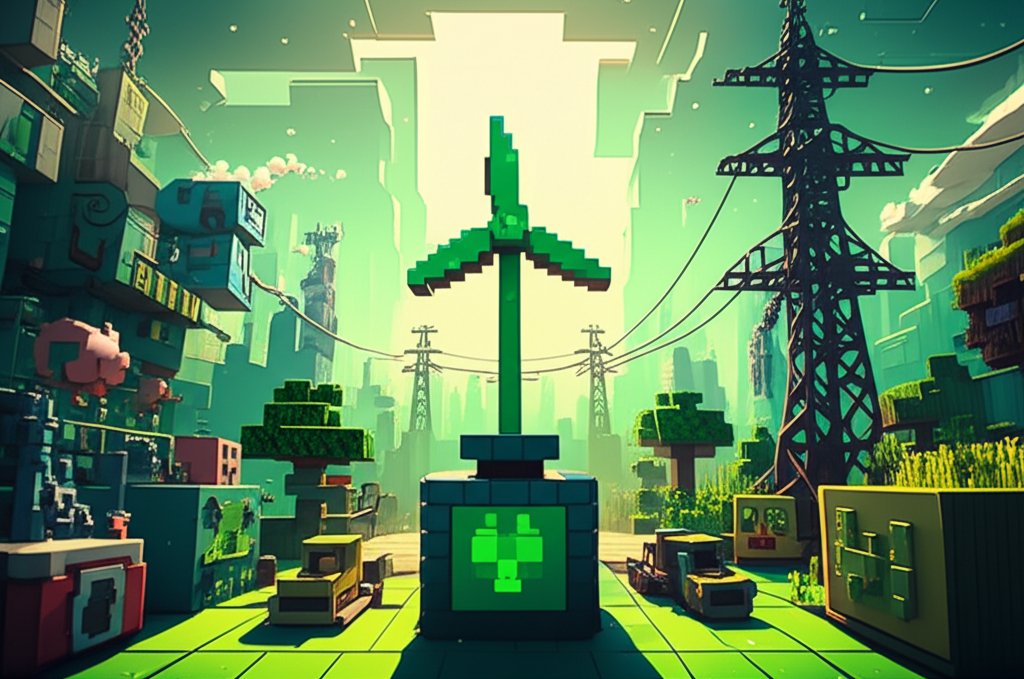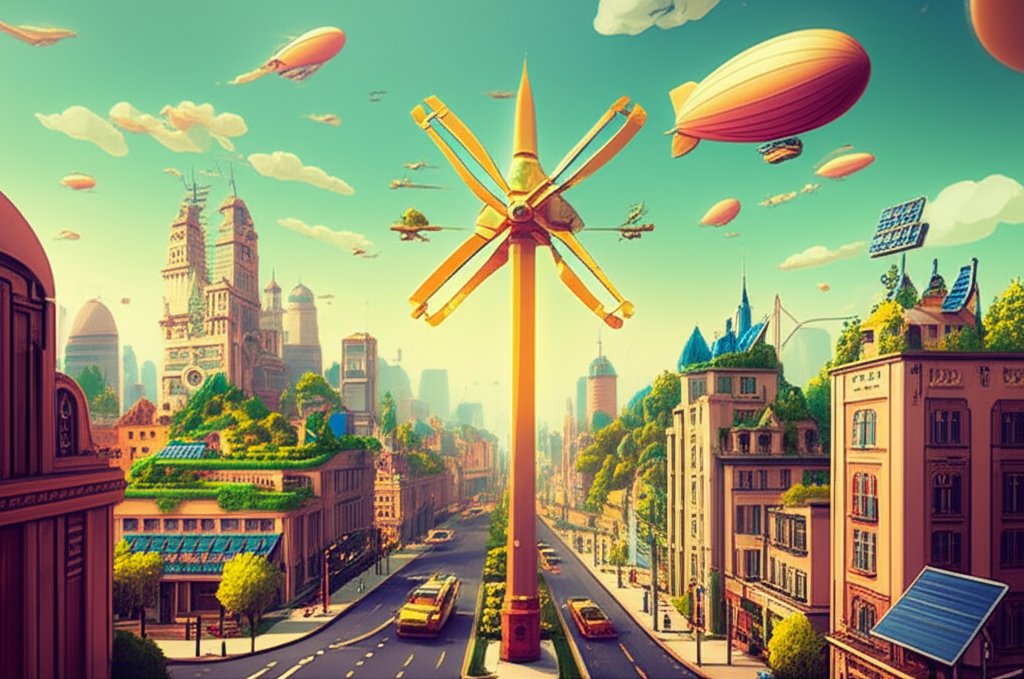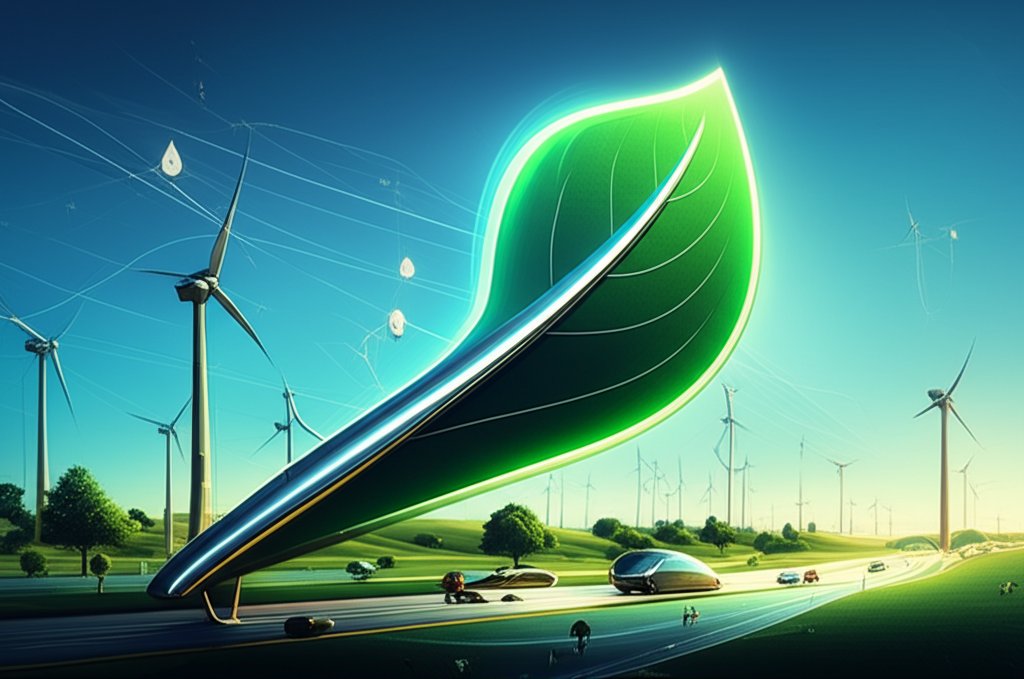Ever stand at the base of a wind turbine and crane your neck, wondering just how long those blades are? It’s a valid question, because how long are wind turbine blades is a major factor in how much clean energy they can generate. The answer, though, isn’t a simple number. They range from just a few feet to longer than a football field, and the size keeps growing as technology advances.
At a glance:
- Modern wind turbine blades can range from under 3 feet to over 350 feet long.
- Longer blades mean more energy capture and greater power output.
- Blade length is a key factor in turbine efficiency and cost-effectiveness.
- Materials like carbon fiber and polyurethane are enabling the creation of larger, more durable blades.
- Blade design balances lift and drag for optimal performance.
Why Blade Length Matters: A Four-Fold Increase in Power
Think of a wind turbine blade like an airplane wing. When the wind hits it, it creates two forces: lift (which makes the blade spin) and drag (which resists the spin). Balancing these forces is crucial to efficient energy generation. The relationship between blade length and turbine output is striking: double the blade length, and the energy captured doesn’t just double; it quadruples. This economy of scale is a driving force behind the trend toward larger blades.
Forty years ago, wind turbine blades were only about 26 feet long. Today, some blades can stretch to a staggering 351 feet – longer than the height of the Statue of Liberty! These modern marvels, made from strong and lightweight carbon fiber, can produce up to 15,000 kW of power.
The Evolution of Blade Design and Materials
The quest for more efficient wind energy has led to a revolution in blade design. Early blades were primarily made of fiberglass and resin while today’s blades, like those on the Siemens Gamesa SG 14-222 DD prototype, utilize advanced carbon-fiber composites.
This allows blades to withstand immense stress, bending, and flexing under harsh conditions. New materials like polyurethane are also emerging as key components, offering superior mechanical endurance and fatigue resistance. Polyurethane can even reduce material usage by about 10% compared to epoxy, leading to more cost-effective blade production.
The Giants of the Industry: Examples of Extreme Blade Length
Let’s look at some specific examples to put those numbers in perspective:
- Siemens Gamesa SG 14-222 DD: This offshore wind turbine prototype boasts a 222-meter rotor diameter and 108-meter (354 feet) blades. One unit can power 18,000 European homes annually. It’s expected to be commercially available soon.
- GE Haliade-X: This massive turbine, with a capacity of 12-14 MW, utilizes blades that are 107 meters (351 feet) long. Impressively, these blades comprise 80% of the turbine’s tower height.
- Smaller Commercial Windmills: On the other end of the spectrum, you’ll find smaller turbines with blades under 3 feet long, used for more localized power generation.
Onshore vs. Offshore: Where Blade Length Differs

Where a wind turbine sits—on land or at sea—also influences blade design and length. There is no set ideal ratio for rotor diameter to tower height, but on average the rotor diameter is half the height of the tower. You’ll often see larger turbines, and thus longer blades, in offshore wind farms. Since these turbines aren’t constrained by the same transportation and logistical challenges as land-based turbines, engineers can push the boundaries of size. For example, the blades on offshore turbines are more gigantic than onshore.
The Benefits of Longer Blades: More Power, Less Clutter
The trend towards longer blades isn’t just about bragging rights. It translates into tangible benefits:
- Increased Energy Capture: Larger blades sweep a greater area, allowing turbines to capture more wind and generate more electricity.
- Improved Efficiency: The relationship between blade length and energy production is exponential. Double the blade length, and you quadruple the power output.
- Reduced Wind Farm Size: With more powerful turbines, you need fewer of them to generate the same amount of energy. This means smaller wind farms that take up less space and require less maintenance.
Bigger is better when it comes to blade length, representing an economy of scale. This translates into smaller wind farms that take up less space with more powerful wind turbines. It is also more cost efficient to have one very powerful wind turbine as opposed to three smaller wind turbines with less materials and maintenance. With less wind turbines overall, there will be less blades ending up in the landfill, thus making wind energy more sustainable.
Challenges and Considerations in Blade Design
Despite the advantages, designing and deploying longer blades presents significant challenges.
- Structural Integrity: Longer blades are more prone to bending and flexing, increasing the risk of collisions with the tower. This is addressed through advanced materials and sophisticated engineering designs.
- Transportation: Moving these massive components from the factory to the wind farm is a logistical nightmare. Blades must be transported on ships, railways, and trucks, navigating roads, bridges, and tunnels that weren’t designed for such large cargo.
- Weight: Modern wind turbine blades are typically made from fiberglass or carbon fiber, making them light and robust. The average weight of one blade can range anywhere between 20 metric tonnes for smaller turbines, up to for large offshore turbines.
- Vibration: Longer blades are more flexible which also creates more vibration, affecting the overall performance and reduces the life of not only the blades but also the attached gearbox.
- Safety: Safety of operation is also a concern, especially during extreme weather events to prevent the blades from crashing into the tower or hub.
The Future of Blade Technology: What’s Next?

Engineers are constantly pushing the boundaries of blade technology. The UpWind Project has even proposed a massive 20 MW turbine with 123-meter-long blades and a rotor diameter of 252 meters. Another design concept envisions a staggering 50 MW turbine with blades reaching 200 meters in length. As blades get longer, they become more prone to bending and flexing, which could lead to collisions with the tower.
These ambitious projects highlight the ongoing quest for larger, more efficient wind turbines. Innovations in materials, design, and manufacturing processes will be crucial to overcoming the challenges and unlocking the full potential of wind energy.
Environmental Factors Affecting Turbine Performance
While blade length plays a crucial role, other environmental factors also influence how well a wind turbine performs. Wind speed is a significant factor since turbines typically begin to generate electricity at wind speeds of six miles per hour.
- Wind Speed: Turbines typically begin generating electricity at wind speeds around 6 mph. They reach maximum potential around 25-30 mph, and most have a cut-off speed of 55 mph to prevent damage.
- Air Density: Denser air carries more mass and creates more lift on the blades. Factors like temperature, elevation, and air pressure influence air density, affecting energy output. Cold, low-elevation areas with high-pressure systems tend to have denser air, making them ideal locations for wind farms. You might even consider creating drawings of wind turbines yourself to envision ideal placement.
- Lift and Drag: When designing a wind turbine blade, you must consider both the lift and drag forces to determine how long your blade must be: Too much drag, and the blade won’t be able to spin and too much lift and the blade will spin too fast and could break.
Answering Common Questions About Wind Turbine Blades
Here are some quick answers to frequently asked questions:
Are longer wind turbine blades always better?
Generally, yes. Longer blades capture more wind and generate more power. However, the cost of manufacturing, transporting, and installing larger blades must be weighed against the potential benefits. Larger blades aren’t always economically feasible.
What are wind turbine blades made of?
Modern blades are typically made from fiberglass or carbon fiber composites. New materials like polyurethane are also gaining traction.
How much does a wind turbine blade weigh?
The weight varies depending on the size and materials used. Smaller blades may weigh around 20 metric tons, while larger offshore blades can weigh significantly more.
How long do wind turbine blades last?
The lifespan of a wind turbine blade is typically 20-25 years. However, factors like weather conditions and maintenance practices can affect its longevity.
What happens to old wind turbine blades?
This is a growing concern. Recycling wind turbine blades is challenging due to the composite materials used. Some blades are repurposed, while others are sent to landfills. Research is underway to develop more sustainable disposal and recycling methods. Perhaps you could even build a Mekanism Boiler and Wind Power wind turbine to reduce waste.
Making Informed Decisions: Choosing the Right Turbine Size
Selecting the appropriate wind turbine size involves carefully analyzing several factors:
- Wind Resource: Assess the average wind speeds at your location. Higher wind speeds generally favor larger turbines with longer blades.
- Energy Needs: Calculate your energy consumption to determine the appropriate turbine capacity.
- Site Constraints: Consider any physical limitations, such as available space, zoning regulations, and environmental restrictions.
- Budget: Evaluate the cost of purchasing, installing, and maintaining different turbine sizes.
- Local Regulations: Compliance with local regulations or restrictions.
- Size of the Wind Turbine: The blade length depends on the size of the wind turbine.
Beyond the Numbers: The Future of Wind Energy
The length of wind turbine blades is just one piece of the puzzle but it is a critical one. As the world transitions towards cleaner energy sources, wind power will play an increasingly vital role. Continued innovation in blade technology, along with advancements in other areas like grid integration and energy storage, will be essential to unlocking the full potential of wind energy and creating a more sustainable future.
- How to Generate Electricity from Water at Home for Off-Grid Power - December 6, 2025
- Small Scale Hydropower Brings Sustainable Energy to Rural Areas - December 5, 2025
- Wind Energy Vehicle: Cars Powered by Wind—The Future is Near? - December 5, 2025
















